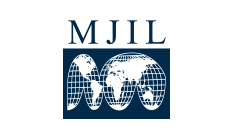Abstract
Competition policy in the United States, particularly reflected in antitrust policy, in recent years has focused on corporate structure. To some, this emphasis simply reflects a belief in a close correlation between corporate structure and behavior. A single firm monopoly inevitably will restrict output and raise prices above levels that would prevail under competition conditions, distorting allocative efficiency. The behavioral pattern is a direct consequence of structure. Many believe that high corporate concentration, even short of single firm monopoly, is at least conducive to, if not a cause of, monopolistic behavior. Some also view high corporate concentration, and the aggregation of economic as well as political and social power identified with it, as a threat to democratic institutions and individual liberty. Not surprisingly, there are dissenters who view high corporate concentration in particular markets as facilitating successful collusive behavior, but of no necessary competitive consequence. The latter view focuses simply on behavior. The relationship between corporate concentration and behavior is thus not clearly understood, and is the subject of vigorous debate in the United States. Of course, this debate is directly relevant to the need for, and contours of, government policy directed toward control of concentration. Antitrust policy directed toward concentration, and particularly mergers that directly increase concentration, is at the heart of the controversy.
Recommended Citation
Thomas E. Kauper,
Introduction: Transnational Corporate Concentration-The Issues,
2
Mich. J. Int'l L.
1
(1981).
Available at:
https://repository.law.umich.edu/mjil/vol2/iss1/1
Included in
Antitrust and Trade Regulation Commons, Business Organizations Law Commons, International Trade Law Commons, Transnational Law Commons

